When we got up we were greeted by a beautifully sunny day, albeit with a chilly feel to the air. Excellent drying weather, which was a good thing as the reason why we were up was that it was washing day again and the only time that the machines were free was at seven in the morning. As Julie and I walked towards the washing machines we noted that opposite us was a very large cruise liner, which had joined the others that occupy the far bank. These, coupled with up to four or five in the adjacent 'free harbour' means that there could be as many as eight in Stockholm at any one time – big business for the local shops.
Washing done, we wanted to see the famous food market called Östermalms Saluhall which apparently is a prime source of produce for the numerous fancy restaurants in Stockholm
. This was brought to our attention by our friends John & Lynne Ladd in a note saying ‘go see it!’ – so we did. It was a 25 minute walk from the boat, quite a pleasant one and we found the red brick building which has been the location of the market since 1888. After a pleasant Roberts coffee, it would be wouldn’t it, I made a beeline for the fish stalls, as I find these sorts stalls the most interesting in any market, anywhere in the world. They had a pretty nice display of our principal food fishes from northern waters and I’ve included a couple of photos, together with another view of the hall.
After this our ways parted. Julie has been shop-starved for 6 weeks or more now and she was looking forward very much to a couple of hours browsing with her more willing shoppers than her husband, who frankly prefers a visit to the dentist! I went to find the supermarket to get some ‘vittles’ and we agreed to meet back at the boat for lunch, which we did in due course.
Now in yesterday’s blog I mentioned the Vasamuseet or the Vasa museum
. There now follows a potted history of the Vasa and why there’s a museum. Around 1625, King Gustaf II Adolf , otherwise known as the ‘Lion of the North’ commissioned a warship to add to his fleet and with the intention of sorting out his cousin in Poland, who had a (legitimate) claim to his kingdom. By 1628 all was ready and this, the grandest vessel of his fleet and with no fewer than 800 carvings on her, set off on her maiden voyage down the coast, where she was to pick up the main body of personnel, the soldiers who would man the cannon (64 large bronze cannon). On board for this short journey were the sailors and invited guests and perhaps some stowaways just for the short ride, a total of perhaps 180 people. After 1422 yards, on 10th August 1628, she was hit by a small gust of wind and this proved too much for her and she listed, her lower gun ports let the water in and she sank. Happily, the water was shallow enough such that the tops of the masts, which were 47m high, enabled many people to be saved as they simply clambered up them as the boat went down. Others swam as it was August and the water would have been warm enough, so that only 30 or so unfortunates actually lost their lives. There was an enquiry which blamed the builder but the real reason for her sinking was a lack of ballast and the number of heavy cannon on board. Most of these cannon were salvaged in later years by very brave people using diving bells but attempts to salvage the boat itself failed and she slowly disappeared into the mud, to be preserved for 333 years until she was finally raised again and housed in a museum. She is quite literally unique, a completely preserved 17th century warship – orders of magnitude more impressive than our own Mary Rose, Henry VIII’s flagship that suffered a similar fate.
Now I’d seen the Vasa before many years ago and I recalled raving enthusiastically about her to Julie upon my return home. I was a little worried that I may have over-sold my experience and the women might not find the visit to the museum to be as fascinating as I did. I needn’t have worried, they were, as they say, completely gobsmacked and our only regret was that we ran out of time, two and a quarter hours were not enough.
I was going to barbecue that night but it was too cold so Elaine produced a really tasty chicken and rice dish, vaguely Moroccan in flavours but whatever its origins, it was delicious.
A 'must see' museum
Thursday, June 28, 2012
 Stockholm, Stockholm, Sweden
Stockholm, Stockholm, Sweden
Other Entries
-
31Saddle Sore
Jun 1117 days prior Valdemarsvik, Swedenphoto_camera6videocam 0comment 0
Valdemarsvik, Swedenphoto_camera6videocam 0comment 0 -
32A lovely anchorage
Jun 1216 days prior Valdemarsvik, Swedenphoto_camera5videocam 0comment 0
Valdemarsvik, Swedenphoto_camera5videocam 0comment 0 -
33Another lovely spot
Jun 1315 days prior Fångö, Swedenphoto_camera5videocam 0comment 0
Fångö, Swedenphoto_camera5videocam 0comment 0 -
34Back to the mainland
Jun 1414 days prior Arkösund, Swedenphoto_camera5videocam 0comment 0
Arkösund, Swedenphoto_camera5videocam 0comment 0 -
35In a steel town
Jun 1513 days prior Oxelosund, Swedenphoto_camera5videocam 0comment 0
Oxelosund, Swedenphoto_camera5videocam 0comment 0 -
36The worst weather yet
Jun 1612 days prior Oxelosund, Swedenphoto_camera4videocam 0comment 0
Oxelosund, Swedenphoto_camera4videocam 0comment 0 -
37A day full of contrasts
Jun 1711 days prior Oxelosund, Swedenphoto_camera9videocam 0comment 0
Oxelosund, Swedenphoto_camera9videocam 0comment 0 -
38A Pretty Town
Jun 1810 days prior Trosa, Swedenphoto_camera6videocam 0comment 0
Trosa, Swedenphoto_camera6videocam 0comment 0 -
39An exhilerating sail
Jun 199 days prior Torö, Swedenphoto_camera7videocam 0comment 0
Torö, Swedenphoto_camera7videocam 0comment 0 -
40Summer is here!
Jun 208 days prior Östermar, Swedenphoto_camera3videocam 0comment 1
Östermar, Swedenphoto_camera3videocam 0comment 1 -
41A short hop to Utö
Jun 217 days prior Utö, Swedenphoto_camera13videocam 0comment 0
Utö, Swedenphoto_camera13videocam 0comment 0 -
42A Messy Exit
Jun 226 days prior Ornö, Swedenphoto_camera0videocam 0comment 0
Ornö, Swedenphoto_camera0videocam 0comment 0 -
43A Fortuitous meeting
Jun 235 days prior Ägnö, Swedenphoto_camera2videocam 0comment 0
Ägnö, Swedenphoto_camera2videocam 0comment 0 -
44Stockholm at Last!
Jun 244 days prior Stockholm, Swedenphoto_camera5videocam 0comment 0
Stockholm, Swedenphoto_camera5videocam 0comment 0 -
45Our Guests Arrive
Jun 253 days prior Stockholm, Swedenphoto_camera0videocam 0comment 0
Stockholm, Swedenphoto_camera0videocam 0comment 0 -
46Day 1 sightseeing
Jun 262 days prior Stockholm, Swedenphoto_camera9videocam 0comment 0
Stockholm, Swedenphoto_camera9videocam 0comment 0 -
47Another good day
Jun 271 day prior Stockholm, Swedenphoto_camera9videocam 0comment 0
Stockholm, Swedenphoto_camera9videocam 0comment 0 -
48A 'must see' museum
Jun 28 Stockholm, Swedenphoto_camera10videocam 0comment 0
Stockholm, Swedenphoto_camera10videocam 0comment 0 -
49On our way to the the Åland islands
Jun 291 day later Vaxholm, Swedenphoto_camera6videocam 0comment 0
Vaxholm, Swedenphoto_camera6videocam 0comment 0 -
50A Day at the Dentist
Jun 302 days later Vaxholm, Swedenphoto_camera2videocam 0comment 0
Vaxholm, Swedenphoto_camera2videocam 0comment 0 -
51Barbecue on an anchorage
Jul 013 days later Granö, Swedenphoto_camera6videocam 0comment 0
Granö, Swedenphoto_camera6videocam 0comment 0 -
52An island with a past
Jul 024 days later Fejan, Swedenphoto_camera7videocam 0comment 0
Fejan, Swedenphoto_camera7videocam 0comment 0 -
53Some 'tired' guests
Jul 035 days later Käringsund, Internationalphoto_camera8videocam 0comment 0
Käringsund, Internationalphoto_camera8videocam 0comment 0 -
54Yet another lovely anchorage
Jul 046 days later Djupviken, Internationalphoto_camera4videocam 0comment 0
Djupviken, Internationalphoto_camera4videocam 0comment 0 -
55Lashed to the mast!
Jul 057 days later Bomarsund, Internationalphoto_camera11videocam 0comment 0
Bomarsund, Internationalphoto_camera11videocam 0comment 0 -
56A Day full of surprises
Jul 068 days later Kastelholm, Internationalphoto_camera12videocam 0comment 0
Kastelholm, Internationalphoto_camera12videocam 0comment 0 -
57The last day together
Jul 079 days later Mariehamn, Finlandphoto_camera4videocam 0comment 0
Mariehamn, Finlandphoto_camera4videocam 0comment 0 -
58And then there were two
Jul 0810 days later Mariehamn, Finlandphoto_camera5videocam 0comment 0
Mariehamn, Finlandphoto_camera5videocam 0comment 0 -
59Not a lot to report day
Jul 0911 days later Mariehamn, Finlandphoto_camera0videocam 0comment 0
Mariehamn, Finlandphoto_camera0videocam 0comment 0 -
60A lovely sail
Jul 1012 days later Kumlinge, Internationalphoto_camera1videocam 0comment 0
Kumlinge, Internationalphoto_camera1videocam 0comment 0 -
61A lovely Church
Jul 1113 days later Kumlinge, Internationalphoto_camera14videocam 0comment 0
Kumlinge, Internationalphoto_camera14videocam 0comment 0 -
62At last, I've seen inside a Bowman 45!
Jul 1214 days later Houtskar Island, Finlandphoto_camera2videocam 0comment 0
Houtskar Island, Finlandphoto_camera2videocam 0comment 0 -
63A night at anchor
Jul 1315 days later Ljungö, Internationalphoto_camera4videocam 0comment 0
Ljungö, Internationalphoto_camera4videocam 0comment 0 -
64No Room at the Inn
Jul 1416 days later Mariehamn, Finlandphoto_camera3videocam 0comment 0
Mariehamn, Finlandphoto_camera3videocam 0comment 0 -
65Back to Sweden
Jul 1517 days later Fejan, Swedenphoto_camera3videocam 0comment 0
Fejan, Swedenphoto_camera3videocam 0comment 0 -
66And then the sun shone
Jul 1618 days later Furusund, Swedenphoto_camera7videocam 0comment 0
Furusund, Swedenphoto_camera7videocam 0comment 0

 Stockholm, Stockholm, Sweden
Stockholm, Stockholm, Sweden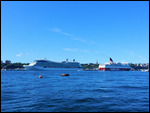
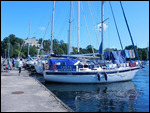



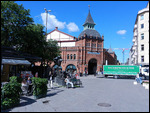
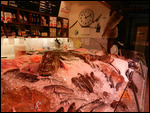

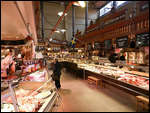
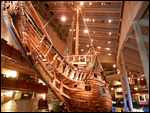
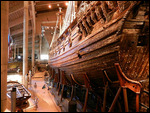
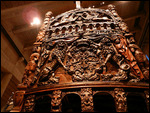
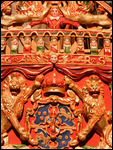
2025-05-22